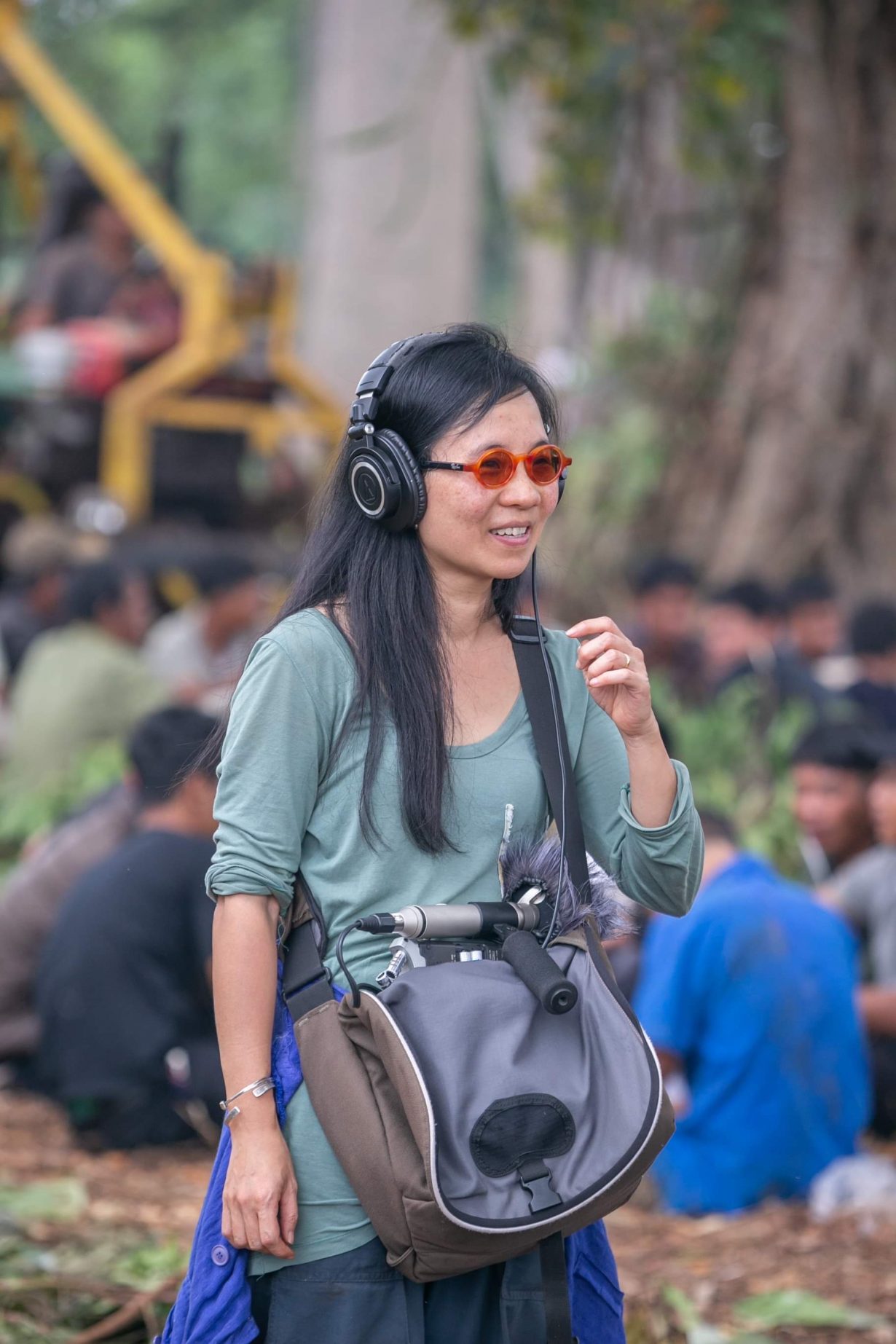
Nguyễn Trinh Thi is nominated for Artes Mundi 10 alongside Mounira Al Solh, Rushdi Anwar, Carolina Caycedo, Alia Farid, Naomi Rincón Gallardo and Taloi Havini. This year’s 10th anniversary prize is presented with the Bagri Foundation and will be awarded to an established international artist whose practice has ‘significantly contributed to art that resonates with our times’. An exhibition of work by the nominees is now open across five venue partners in Wales, with the seven artists presenting major solo projects that ‘collectively address issues surrounding land use, territory and displacement through histories of environmental change, conflict and enforced migration, conditions that speak to us all today’. The winner will be announced in January. ArtReview is a media partner of Artes Mundi 10.
ArtReview Could you tell us about your project for Artes Mundi and what form it takes? Are there other artists, groups or individuals who serve as an inspiration for your work?
Nguyễn Trinh Thi For Artes Mundi, I’m re-presenting And They Die a Natural Death, originally shown as part of Documenta 15 in 2022 in the Rondell (a former gun turret), here newly reconfigured for a gallery setting. This sound and mixed-media installation takes the form of a live theatre, in which an automated system controls the flutes and lights inside the gallery according to the direction and intensity of the wind blowing in a forest in Vietnam.
Nguyễn Trinh Thi is nominated for Artes Mundi 10 alongside Mounira Al Solh, Rushdi Anwar, Carolina Caycedo, Alia Farid, Naomi Rincón Gallardo and Taloi Havini. This year’s 10th anniversary prize is presented with the Bagri Foundation and will be awarded to an established international artist whose practice has ‘significantly contributed to art that resonates with our times’. An exhibition of work by the nominees is now open across five venue partners in Wales, with the seven artists presenting major solo projects that ‘collectively address issues surrounding land use, territory and displacement through histories of environmental change, conflict and enforced migration, conditions that speak to us all today’. The winner will be announced in January. ArtReview is a media partner of Artes Mundi 10.
The work takes inspiration from a scene of frenzied shooting of prisoners in a wild chili forest, recounted in the autobiographical novel Tale Told in the Year 2000 by Vietnamese writer Bùi Ngọc Tấn. In real time, an immersive shadowy forest on the gallery surrounding walls connects the space in Swansea to the Vietnamese woodland. The work uses living chili plants for the shadow play, and custom-built bamboo flutes based on those used amongst various indigenous groups in Vietnam.
In the novel, published in 2000, but immediately withdrawn, destroyed and banned in Vietnam to this day, Bùi Ngọc Tấn described his life in a detention camp in northern Vietnam in the 1960s and 70s. These camps were used by the authorities to suppress, among others, intellectuals and dissidents. The novel also describes in detail the trees, plants, birds and the ecosystems of the forests where he and other prisoners performed forced labour.
In this work, my interest lies in the overlapping political and ecological histories that are woven together. One of the many definitions of freedom in Tan’s book that I found particularly beautiful, is where he compares freedom to the taste of chili. For him and other prisoners, chili and other spice herbs became the taste and feeling of home.

AR As well as working with some of the leading artists of our times, Artes Mundi 10 seeks to reveal something of the most pressing issues facing society at large today. What are some of those issues in relation to your practice and how can an artwork change our perception of or our means of addressing those issues? Do you think art needs to be relevant in those terms, terms that perhaps exist outside the traditional remit of art as a category in and of itself?
NTT Among other issues, my work relates to history, memory, indigenous and local knowledge, land and ecology. For me, the role of the artist is to engage the audience with the story, suggest connections between things that seem unrelated, open up new questions and inspire them to think in new ways.
AR We live in a world in which there is a rise in nationalisms of various types and a global structure that separates people more than it unites. Do you see your work as furthering more general cultural exchange? As bridging some of those cultural divides?
NTT Yes, I definitely hope so.
Artes Mundi is the largest monetary prize in the UK, offering £40,000 to the winner. Should you win, how do you plan on using the prize money? Do you have a particular project that you would like to use it to realise?
NTT I haven’t thought much about this. But for sure, I’d like to continue to explore the power of sound and listening, and the multiple relations between image, sound and space, with ongoing interests in history, memory, representation, ecology and the unknown. In a current project, for example, I’m making a work in which the water from the endangered Mekong River in Thailand takes centre-stage, producing a musical ensemble using media arts technology and indigenous musical instruments. The work navigates the possibilities between the human and nonhuman worlds, across histories and memories, traversing the political and the ecological realms.
AR This is the tenth edition of Artes Mundi. What role do you think such prizes play within a more general arts ecosystem?
NTT Prizes such as Artes Mundi play a very important role within a general arts ecosystem, through paying attention to significant independent works that could exist somewhere not quite in the centre of the global art world.
For Artes Mundi 10, Nguyễn Trinh Thi will present And They Die a Natural Death (2022) at Glynn Vivian, and a series of films at Chapter, Cardif, through 25 February